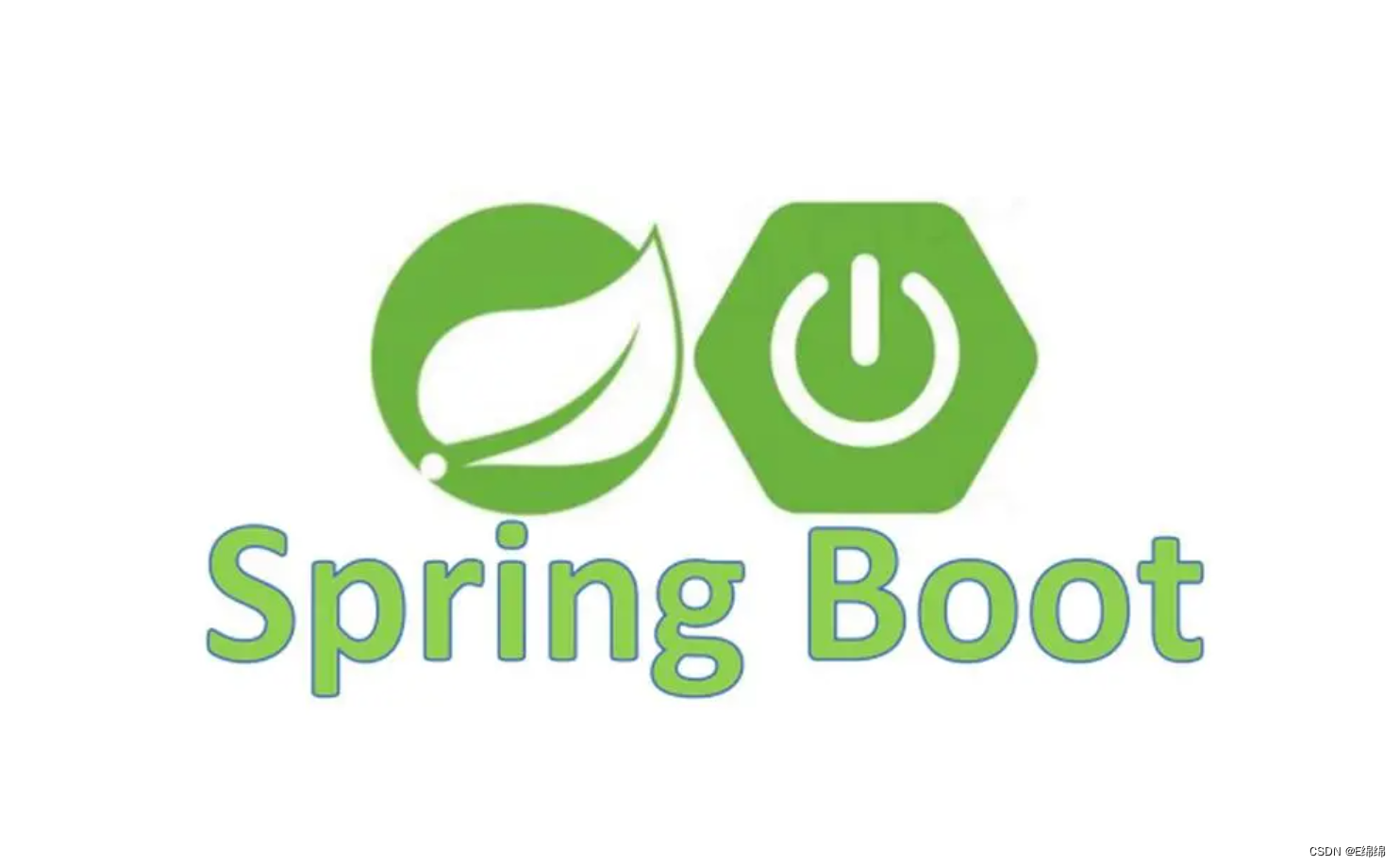引言
在线图书管理系统在图书馆、书店和教育机构中广泛应用,帮助用户方便地管理图书信息,进行图书的借阅和归还操作。Spring Boot通过其简便的配置和强大的功能支持,使得开发一个在线图书管理系统变得更加容易。本文将详细探讨如何使用Spring Boot实现一个在线图书管理系统,并提供具体的代码示例和应用案例。

第一章 Spring Boot概述
1.1 什么是Spring Boot
Spring Boot是基于Spring框架的一个开源项目,旨在通过简化配置和快速开发,帮助开发者构建独立、生产级的Spring应用。Spring Boot通过自动化配置、内嵌服务器和多样化的配置方式,使得开发者能够更加专注于业务逻辑,而不需要花费大量时间在繁琐的配置上。
1.2 Spring Boot的主要特性
- 自动化配置:通过自动化配置减少了大量的手动配置工作,开发者只需定义少量的配置,即可启动一个完整的Spring应用。
- 内嵌服务器:提供内嵌的Tomcat、Jetty和Undertow服务器,方便开发者在开发和测试阶段快速启动和运行应用。
- 独立运行:应用可以打包成一个可执行的JAR文件,包含所有依赖项,可以独立运行,不需要外部的应用服务器。
- 生产级功能:提供了监控、度量、健康检查等生产级功能,方便开发者管理和监控应用的运行状态。
- 多样化的配置:支持多种配置方式,包括YAML、Properties文件和环境变量,满足不同开发和部署环境的需求。
第二章 项目初始化
使用Spring Initializr生成一个Spring Boot项目,并添加所需依赖。
<!-- 示例:通过Spring Initializr生成的pom.xml配置文件 -->
<project xmlns="http://maven.apache.org/POM/4.0.0"
xmlns:xsi="http://www.w3.org/2001/XMLSchema-instance"
xsi:schemaLocation="http://maven.apache.org/POM/4.0.0 http://maven.apache.org/xsd/maven-4.0.0.xsd">
<modelVersion>4.0.0</modelVersion>
<groupId>com.example</groupId>
<artifactId>library-management</artifactId>
<version>0.0.1-SNAPSHOT</version>
<packaging>jar</packaging>
<name>library-management</name>
<description>Demo project for Spring Boot Library Management</description>
<parent>
<groupId>org.springframework.boot</groupId>
<artifactId>spring-boot-starter-parent</artifactId>
<version>2.5.4</version>
<relativePath/> <!-- lookup parent from repository -->
</parent>
<dependencies>
<dependency>
<groupId>org.springframework.boot</groupId>
<artifactId>spring-boot-starter-web</artifactId>
</dependency>
<dependency>
<groupId>org.springframework.boot</groupId>
<artifactId>spring-boot-starter-data-jpa</artifactId>
</dependency>
<dependency>
<groupId>com.h2database</groupId>
<artifactId>h2</artifactId>
<scope>runtime</scope>
</dependency>
</dependencies>
<build>
<plugins>
<plugin>
<groupId>org.springframework.boot</groupId>
<artifactId>spring-boot-maven-plugin</artifactId>
</plugin>
</plugins>
</build>
</project>
第三章 用户管理模块
3.1 创建用户实体类
定义用户实体类,并配置JPA注解。
// 示例:用户实体类
package com.example.librarymanagement.model;
import javax.persistence.Entity;
import javax.persistence.GeneratedValue;
import javax.persistence.GenerationType;
import javax.persistence.Id;
@Entity
public class User {
@Id
@GeneratedValue(strategy = GenerationType.AUTO)
private Long id;
private String username;
private String password;
private String email;
// Getters and Setters
}
3.2 创建用户Repository接口
创建一个JPA Repository接口,用于数据访问操作。
// 示例:用户Repository接口
package com.example.librarymanagement.repository;
import com.example.librarymanagement.model.User;
import org.springframework.data.jpa.repository.JpaRepository;
import org.springframework.stereotype.Repository;
@Repository
public interface UserRepository extends JpaRepository<User, Long> {
User findByUsername(String username);
}
3.3 实现用户Service类
创建一个Service类,封装业务逻辑和数据访问操作。
// 示例:用户服务类
package com.example.librarymanagement.service;
import com.example.librarymanagement.model.User;
import com.example.librarymanagement.repository.UserRepository;
import org.springframework.beans.factory.annotation.Autowired;
import org.springframework.security.crypto.password.PasswordEncoder;
import org.springframework.stereotype.Service;
import java.util.List;
@Service
public class UserService {
@Autowired
private UserRepository userRepository;
@Autowired
private PasswordEncoder passwordEncoder;
public User save(User user) {
user.setPassword(passwordEncoder.encode(user.getPassword()));
return userRepository.save(user);
}
public List<User> findAll() {
return userRepository.findAll();
}
public User findByUsername(String username) {
return userRepository.findByUsername(username);
}
}
3.4 创建用户Controller类
创建一个Controller类,定义RESTful API的端点,并通过Service类处理请求。
// 示例:用户控制器
package com.example.librarymanagement.controller;
import com.example.librarymanagement.model.User;
import com.example.librarymanagement.service.UserService;
import org.springframework.beans.factory.annotation.Autowired;
import org.springframework.web.bind.annotation.*;
import java.util.List;
@RestController
@RequestMapping("/users")
public class UserController {
@Autowired
private UserService userService;
@GetMapping
public List<User> getAllUsers() {
return userService.findAll();
}
@PostMapping
public User createUser(@RequestBody User user) {
return userService.save(user);
}
}
第四章 图书管理模块
4.1 创建图书实体类
定义图书实体类,并配置JPA注解。
// 示例:图书实体类
package com.example.librarymanagement.model;
import javax.persistence.Entity;
import javax.persistence.GeneratedValue;
import javax.persistence.GenerationType;
import javax.persistence.Id;
@Entity
public class Book {
@Id
@GeneratedValue(strategy = GenerationType.AUTO)
private Long id;
private String title;
private String author;
private String isbn;
private String publisher;
// Getters and Setters
}
4.2 创建图书Repository接口
创建一个JPA Repository接口,用于数据访问操作。
// 示例:图书Repository接口
package com.example.librarymanagement.repository;
import com.example.librarymanagement.model.Book;
import org.springframework.data.jpa.repository.JpaRepository;
import org.springframework.stereotype.Repository;
@Repository
public interface BookRepository extends JpaRepository<Book, Long> {
}
4.3 实现图书Service类
创建一个Service类,封装业务逻辑和数据访问操作。
// 示例:图书服务类
package com.example.librarymanagement.service;
import com.example.librarymanagement.model.Book;
import com.example.librarymanagement.repository.BookRepository;
import org.springframework.beans.factory.annotation.Autowired;
import org.springframework.stereotype.Service;
import java.util.List;
@Service
public class BookService {
@Autowired
private BookRepository bookRepository;
public Book save(Book book) {
return bookRepository.save(book);
}
public List<Book> findAll() {
return bookRepository.findAll();
}
public Book findById(Long id) {
return bookRepository.findById(id).orElse(null);
}
public void deleteById(Long id) {
bookRepository.deleteById(id);
}
}
4.4 创建图书Controller类
创建一个Controller类,定义RESTful API的端点,并通过Service类处理请求。
// 示例:图书控制器
package com.example.librarymanagement.controller;
import com.example.librarymanagement.model.Book;
import com.example.librarymanagement.service.BookService;
import org.springframework.beans.factory.annotation.Autowired;
import org.springframework.web.bind.annotation.*;
import java.util.List;
@RestController
@RequestMapping("/books")
public class BookController {
@Autowired
private BookService bookService;
@GetMapping
public List<Book> getAllBooks() {
return bookService.findAll();
}
@GetMapping("/{id}")
public Book getBookById(@PathVariable Long id) {
return bookService.findById(id);
}
@PostMapping
public Book createBook(@RequestBody Book book) {
return bookService.save(book);
}
@DeleteMapping("/{id}")
public void deleteBook(@PathVariable Long id) {
bookService.deleteById(id);
}
}
第五章 借阅管理模块
5.1 创建借阅实体类
定义借阅实体类,并配置JPA注解。
// 示例:借阅实体类
package com.example.librarymanagement.model;
import javax.persistence.Entity;
import javax.persistence.GeneratedValue;
import javax.persistence.GenerationType;
import javax.persistence.Id;
import java.time.LocalDate;
@Entity
public class Borrow {
@Id
@GeneratedValue(strategy = GenerationType.AUTO)
private Long id;
private Long userId;
private Long bookId;
private LocalDate borrowDate;
private LocalDate returnDate;
// Getters and Setters
}
5.2 创建借阅Repository接口
创建一个JPA Repository接口,用于数据访问操作。
// 示例:借阅Repository接口
package com.example.librarymanagement.repository;
import com.example.librarymanagement.model.Borrow;
import org.springframework.data.jpa.repository.JpaRepository;
import org.springframework.stereotype.Repository;
@Repository
public interface BorrowRepository extends JpaRepository<Borrow, Long> {
}
5.3 实现借阅Service类
创建一个Service类,封装业务逻辑和数据访问操作。
// 示例:借阅服务类
package com.example.librarymanagement.service;
import com.example.librarymanagement.model.Borrow;
import com.example.librarymanagement.repository.BorrowRepository;
import org.springframework.beans.factory.annotation.Autowired;
import org.springframework.stereotype.Service;
import java.util.List;
@Service
public class BorrowService {
@Autowired
private BorrowRepository borrowRepository;
public Borrow save(Borrow borrow) {
return borrowRepository.save(borrow);
}
public List<Borrow> findAll() {
return borrowRepository.findAll();
}
public Borrow findById(Long id) {
return borrowRepository.findById(id).orElse(null);
}
public void deleteById(Long id) {
borrowRepository.deleteById(id);
}
}
5.4 创建借阅Controller类
创建一个Controller类,定义RESTful API的端点,并通过Service类处理请求。
// 示例:借阅控制器
package com.example.librarymanagement.controller;
import com.example.librarymanagement.model.Borrow;
import com.example.librarymanagement.service.BorrowService;
import org.springframework.beans.factory.annotation.Autowired;
import org.springframework.web.bind.annotation.*;
import java.util.List;
@RestController
@RequestMapping("/borrows")
public class BorrowController {
@Autowired
private BorrowService borrowService;
@GetMapping
public List<Borrow> getAllBorrows() {
return borrowService.findAll();
}
@GetMapping("/{id}")
public Borrow getBorrowById(@PathVariable Long id) {
return borrowService.findById(id);
}
@PostMapping
public Borrow createBorrow(@RequestBody Borrow borrow) {
return borrowService.save(borrow);
}
@DeleteMapping("/{id}")
public void deleteBorrow(@PathVariable Long id) {
borrowService.deleteById(id);
}
}
第六章 部署与监控
6.1 部署Spring Boot应用
Spring Boot应用可以通过多种方式进行部署,包括打包成JAR文件、Docker容器等。
# 打包Spring Boot应用
mvn clean package
# 运行Spring Boot应用
java -jar target/library-management-0.0.1-SNAPSHOT.jar
6.2 使用Docker部署Spring Boot应用
Docker是一个开源的容器化平台,可以帮助开发者将Spring Boot应用打包成容器镜像,并在任何环境中运行。
# 示例:Dockerfile文件
FROM openjdk:11-jre-slim
VOLUME /tmp
COPY target/library-management-0.0.1-SNAPSHOT.jar app.jar
ENTRYPOINT ["java","-jar","/app.jar"]
# 构建Docker镜像
docker build -t spring-boot-library-management .
# 运行Docker容器
docker run -p 8080:8080 spring-boot-library-management
6.3 监控Spring Boot应用
Spring Boot Actuator提供了丰富的监控功能,通过Prometheus和Grafana,可以实现对Spring Boot应用的监控和可视化。
<!-- 示例:集成Prometheus的pom.xml配置文件 -->
<dependency>
<groupId>io.micrometer</groupId>
<artifactId>micrometer-registry-prometheus</artifactId>
</dependency>
# 示例:Prometheus配置文件
management:
endpoints:
web:
exposure:
include: "*"
endpoint:
prometheus:
enabled: true
结论
通过Spring Boot,开发者可以高效地构建一个在线图书管理系统,涵盖用户管理、图书管理、借阅管理等关键功能。本文详细介绍了系统的基础知识、Spring Boot的核心功能、具体实现以及部署和监控,帮助读者深入理解和掌握Spring Boot在在线图书管理系统开发中的应用。希望本文能够为您进一步探索和应用Spring Boot提供有价值的参考。























 2780
2780











 被折叠的 条评论
为什么被折叠?
被折叠的 条评论
为什么被折叠?








